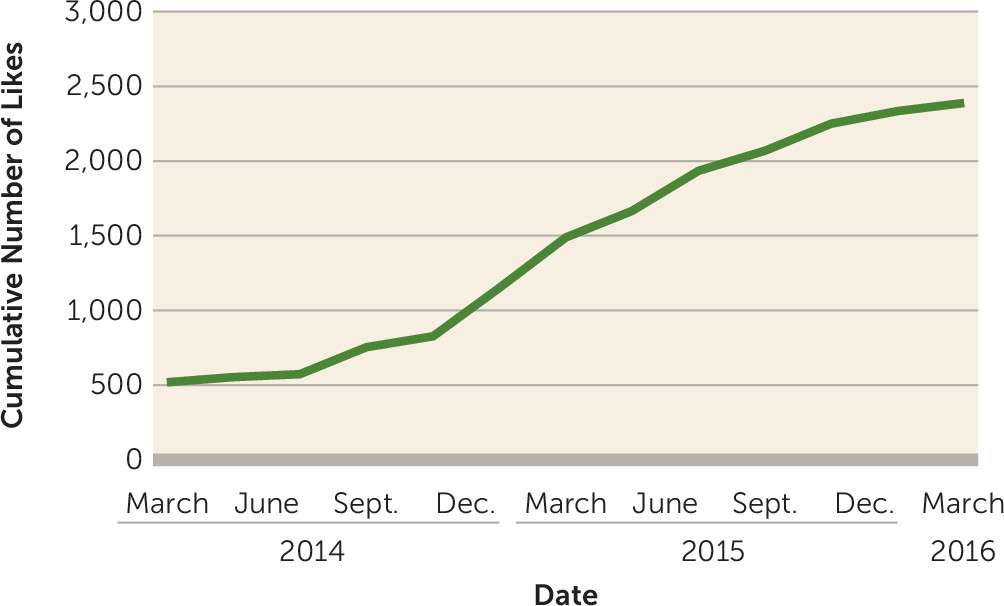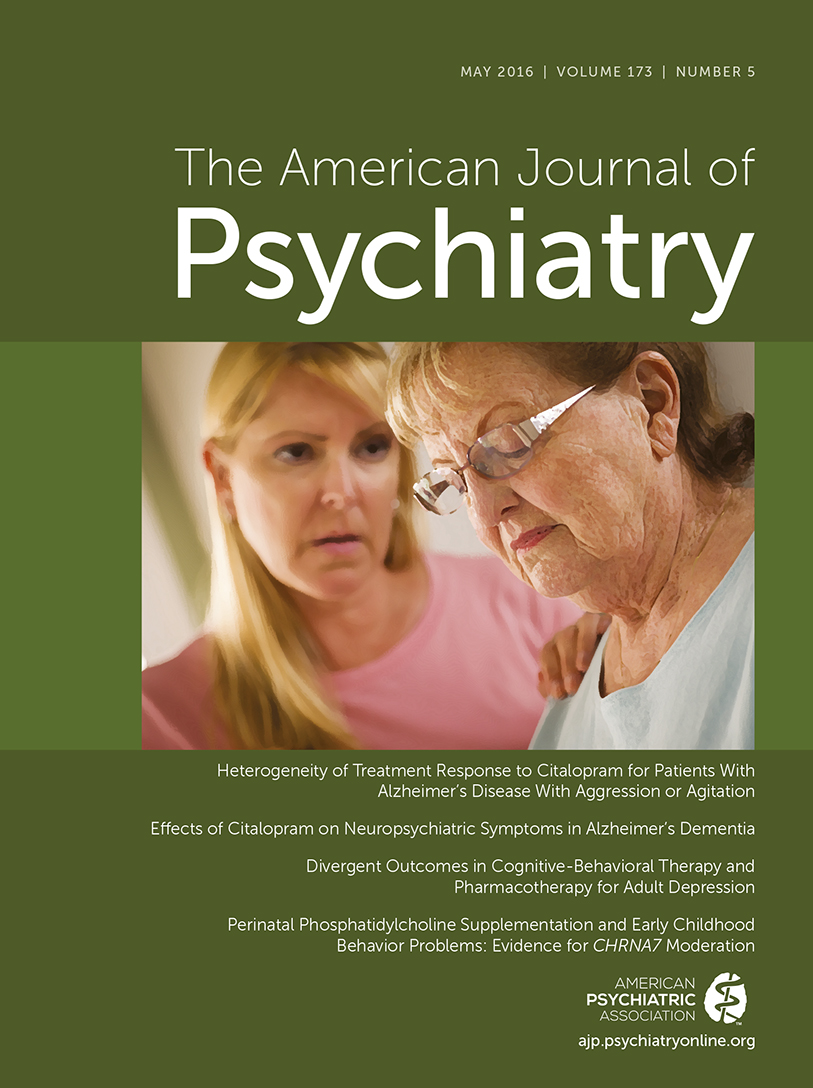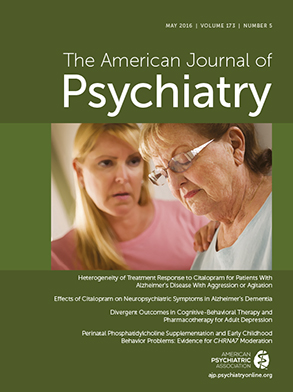Psychiatry residents are tasked with becoming knowledgeable in a number of areas during the course of their training, such as psychopharmacology, psychotherapy, and clinical neuroscience, among others (
1). For those interested in academic careers, there are yet additional aptitudes that must be developed, namely, those that can be described as
scholarship. In addition to publishing one’s own work, an important component of scholarship is participation in the peer review and editorial processes (
2). However, for trainees, there are few opportunities to become skilled in these practices, as academic journals rarely offer apprentice roles to help residents “learn the ropes” of how to be a peer reviewer or a guest editor—roles that are frequently expected of academic psychiatrists.
Here we describe one such opportunity provided by the American Journal of Psychiatry (the Journal) in the formation of the American Journal of Psychiatry Residents’ Journal. This is the first online academic journal in the field of psychiatry created by trainees and for trainees. The mission of the Residents’ Journal is to assist medical students, psychiatry residents, and fellows in publishing their scholarly work. Consistent with this mission, original submissions are rarely rejected, and instead the editorial board works collaboratively with authors to revise their articles as many times as necessary until they are suitable for publication. The Residents’ Journal uses organizing principles that parallel those of a clinical training team to foster this development and participation and provide opportunities for trainees to begin their academic career development.
History and Growth
The first issue of the
Residents’ Journal was published on the
American Journal of Psychiatry web site in October 2006 (
3). Robert Freedman and Susan Schultz, Editor-in-Chief and Deputy Editor of the
Journal, respectively, started the
Residents’ Journal as an online guide for residents and students on how to approach and appreciate the psychiatric scientific literature while also highlighting recent findings from the
Journal. Particularly pivotal in the development of the
Residents’ Journal was then-resident Joseph M. Cerimele, M.D., who, starting in July 2010, served as Editor-in-Chief of the
Residents’ Journal. In this role, Dr. Cerimele introduced several new ideas to the publication, including development of an integrated peer review process and the opportunity for trainees to serve as monthly guest-section editors on a topic of their choosing (
4). The
Residents’ Journal became focused on creating a forum for medical students and trainees to publish articles on key concepts in psychiatry, describe original research, highlight current events, and create an ongoing discussion about the unique aspects of the treatment of patients with mental illness. More importantly, it empowered trainees to take ownership of a domain within academic psychiatry that would be critical to their career development.
A number of important developments have contributed to the Residents’ Journal’s growth over the decade since its inception. Awareness of and attention to the Residents’ Journal has risen among students and trainees, and in July 2015 alone, 207 APA resident-fellow members visited the Residents’ Journal web site (approximately 22% of all APA resident-fellow members). To adjust to the significant increase in submissions over the years, the Residents’ Journal’s editorial staff has expanded from a single editor to an editorial board, mirroring the organization of many academic journals. The editorial board currently comprises five trainee members—an Editor-in-Chief, a Senior Deputy Editor, a Deputy Editor, and two Associate Editors—each with unique tasks and responsibilities in the journal management and peer review process. The editorial board is chosen through a competitive review process that involves both a written application and an interview. Applications are invited for editorial board positions in January of each year and are advertised in both the Journal and the Residents’ Journal. Residents who publish in the Residents’ Journal also have additional opportunities to serve as a guest-section editor, selected by the editorial board through a competitive process. In this role, the guest-section editor chooses a theme for his or her issue and actively participates in the recruitment, selection, and peer review process of articles submitted by other trainees for the issue.
In 2012, the
Residents’ Journal made its way to social media via its Facebook and Twitter accounts, which are used to highlight recently published articles and to pose board-style questions to followers. The
Residents’ Journal’s social media presence has continued to grow since then, and as of March 2016, its Facebook page reached over 2,300 people from 45 countries (
Figure 1). As the
Residents’ Journal has grown in significance, so has its role within its parent organization (the
Journal and APA) and the psychiatric community at large. One article from the
Residents’ Journal is now featured annually in the
Journal’s year-end review (
5), and the
Residents’ Journal editorial board conducts a workshop for resident-fellow members each year at the APA Annual Meeting. In July 2015, an article from the
Residents’ Journal was featured in
Psychiatric Times as one of the top psychiatric articles published that month (
6).
Peer Review and Editorship as Experiential Learning
The unique experiential learning opportunity provided by the Residents’ Journal parallels the educational experience of residency training in which one learns by being placed in an active clinical role while being provided ample and appropriate levels of supervision. The roles for trainees within the editorial board are in many ways analogous to roles occupied on a clinical team. The Associate Editors are the interns of the group, learning through the iterative process of high-volume manuscript review. The Deputy and Senior Deputy Editors, the more senior residents, actively participate in the peer review process while also overseeing particular journal sections and helping supervise their junior colleagues. The Editor-in-Chief is then analogous to the chief resident, who administers all aspects of the team while liaising with the “attending” (the Editor-in-Chief of the Journal) for guidance and supervision.
As a member of the editorial board, trainees broaden their knowledge base in several aspects of peer review and journal editorship. By repeatedly reviewing submitted manuscripts, trainees gain ample experience in reviewing the work of their colleagues, the most fundamental skill of peer review. During this process, the trainee learns how to evaluate a manuscript’s clinical application, the author’s writing style, how interesting the piece will be to other residents, and the relevance and comprehensiveness of the references utilized. More junior editors are then supervised in how to effectively communicate their reviews with authors so as to balance both positive and constructive components. As a more senior editor, the trainee gains experience serving in a leadership role, practicing effective communication skills with the editorial board and administrative staff, and gaining insight into the behind-the-scenes aspects of how a single journal issue is crafted—from article solicitation to the postproduction process. Furthermore, the Residents’ Journal editorial board is invited each year to the Journal’s editorial board meeting, providing trainees with further insight into how one of the preeminent journals in the field operates.
Recognizing the value of trainees serving in editorial roles, other journals have launched similar initiatives. The
Lancet Student began in 2007 and is run by medical students as a forum to discuss their experience as medical students and to highlight top health issues of the day (
7). Recently, the
Journal of the American Academy of Child and Adolescent Psychiatry (
JAACAP) launched a similar trainee-led endeavor entitled
JAACAP Connect (
8).
JAACAP Connect was created as a forum for early-career child and adolescent psychiatrists who are interested in pursuing academic careers. Each trainee author is paired with a senior attending specializing in their chosen topic who assists with crafting the manuscript submission so as to facilitate networking opportunities and focused learning. This experience differs from the
Residents’ Journal in that the emphasis is more on mentoring between a seasoned attending and a trainee, whereas the
Residents’ Journal is entirely trainee led; in fact, attendings are excluded from being listed as authors. In this way, there is more autonomy with the
Residents’ Journal, with the option of seeking supervision from official
Journal staff. Finally, the
New England Journal of Medicine has a blog,
Now@NEJM, which is in part operated by trainees (
9).
Lessons Learned
Benefits.
One of the most unique and rewarding aspects of the Residents’ Journal is the autonomy afforded its trainee editors to independently guide the direction of the journal. Although the Journal editorial staff is available for requested supervision and consultation, the trainee editors are otherwise empowered to make decisions independently. As opposed to a traditional research track in which a trainee may initially serve as one small component of a laboratory ocean liner of research staff, the Residents’ Journal trainee editors set out from the start on a rowboat and are given paddles to get themselves to shore (although emergency flares are available as needed). Through this independence, the trainee editors are able to learn from their own judgment and sense of responsibility, which contributes to their professional development as scholarly editors and leaders. This opportunity is particularly valuable for those trainees who are not inclined to enter traditional research careers and might otherwise miss out on such scholarly apprenticeship. This editorial work builds on one’s writing and editing skills, and ultimately contributes to increased confidence and capabilities in pursuing independent scholarly work.
Serving as Residents’ Journal editors enables trainees to begin to build the foundation of a unique skill set that they will further cultivate throughout their academic careers. Editors develop and hone the critical thinking skills necessary to understand and evaluate each submitted manuscript they review. They further build on an expanding knowledge base through their review of manuscripts from a variety of subspecialty disciplines, some of which they may not otherwise be exposed to during their training. Residents’ Journal editors also have several opportunities to improve their ability to present their ideas in a clear, succinct, and systematic manner. This occurs both in frequent written communications with authors and the editorial staff and in oral communications during the annual Journal editorial board meeting, at which the Residents’ Journal editorial board presents the highlights of the Residents’ Journal from the previous year.
Beyond the skills directly afforded the trainee editor through participation in this process, such a role can also serve as a springboard to other scholarly opportunities. As editors for other journals and periodicals become familiar with the trainee’s work, trainees may be invited to contribute their own manuscripts to outside forums. For example, two of the authors (M.R., R.R.) were invited to publish book reviews for the
Journal (
10), and the first three authors were invited to submit an article to
Psychiatric News (
11). Perhaps even more significantly, gaining experience as an editor for a trainee-led journal can serve as a stepping stone to additional peer review and editorial opportunities often not afforded to trainees, as they frequently have not yet had the opportunity to refine this skill set. Many who have completed terms as trainee editors have gone on to additional scholarly accomplishments and promising academic careers and cite the opportunity to hone their editorial, peer review, and leadership skills as a
Residents’ Journal editor as pivotal in guiding their career trajectory.
Another rewarding aspect of serving as a Residents’ Journal editor is the sense of camaraderie and teamwork experienced by the editorial staff. As described above, the editorial team is in many ways analogous to a clinical training team; and just as a clinical team bonds, so too does the editorial team. Over the course of the year of service, the editors work together each month to craft each issue essentially from scratch. Going through this process together every month for 12 months leads to the formation of lasting and collegial professional connections and the opportunity for future collaborations. In this way, serving as a journal editor leads not only to individual and collective professional development, but also career advancement.
For all trainees, the
Residents’ Journal provides an important outlet and space for the growth of novel scholarly ideas. The focused and succinct nature of the pieces published in the
Residents’ Journal makes them well suited for busy trainees who often have little time to devote to reading scholarly articles or initiating their own independent scholarship. Some trainees have published small empirical studies or review articles in the
Residents’ Journal that later developed into larger projects and subsequent publications in other peer-reviewed academic journals (
12). The expansion of the
Residents’ Journal’s national presence, in particular its social media presence, has also fostered a greater sense of community and provided a forum for trainees across the country to share experiences, ideas, and opportunities.
Limitations.
While there are many rewarding and beneficial aspects of serving as a Residents’ Journal editor, the experience is not without its limitations. An inherent limitation in being a “peer-reviewed” journal by trainees for trainees is that none of the journal’s peer reviewers are yet expert in the subject matter they are reviewing. So while reviewers are able to comment on certain aspects of each submission (writing style, grammar, syntax, etc.), they are not able to definitively make determinations commensurate with a true expertise in a particular area of the field (e.g., were the references utilized in this review article sufficiently comprehensive and representative of the literature on the subject?). Also, trainee reviewers are not all created equal. For example, the author of a submission might be a PGY-5 fellow, but the editor reviewing the submission might be a PGY-2 resident, creating an imbalance in experience and knowledge. Furthermore, while all editors are trained in the peer review process and are provided feedback regarding their work by more senior editors, there is still a somewhat limited capacity for quality-controlling other reviewers’ work. Another limitation is that because of time and resource constraints, each submission is reviewed by only one peer reviewer, which allows for reviewer bias. In the future, a goal of the Residents’ Journal is to have multiple peer reviewers assigned to each submission to facilitate interesting discussion and a more fair selection process.
Despite the opportunities for professional advancement described above, participation as a Residents’ Journal editor does not lead to a clear career path advancement. Serving as an editor does not necessarily propel one toward a career in translational or health services research, or even a career as a clinician-educator. So while the experience provides opportunities, it is still up to the trainee to pursue them after completion of their editorial term.
Certain pragmatic concerns also pose limitations to the Residents’ Journal. At this time, journal articles are not indexed in PubMed, which can serve as a disincentive for trainees to submit their scholarly work. Also, while upcoming journal themes are publicized in each issue, often the solicitation of manuscript submissions occurs through trainee word-of-mouth. This unfortunately may lead to lost opportunities to involve as wide a variety of authors and topics as possible.
Other conflicts sometimes arise from the nature of the supervisory relationship between the
Journal and the
Residents’ Journal. For example, the
Journal has determined that
Residents’ Journal authors must be trainees from North American training programs (i.e., the United States, Mexico, and Canada). This guideline on authorship was put into place in an effort to keep the number of submissions manageable, as the
Residents’ Journal’s online manuscript processing and web publishing are generously provided by the
Journal’s own resources and staff. The geographic limitation on authorship does unfortunately exclude many excellent trainees from international programs from publishing their work. Faculty from several countries have attended the
Residents’ Journal’s presentation at the APA Annual Meeting to learn what it is doing, in order to replicate it through their countries’ own psychiatric journals. Another example of the symbiotic relationship with the
Journal is when a
Residents’ Journal submission is of such high quality that Dr. Freedman, Editor-in-Chief of the
Journal, poaches it from the
Residents’ Journal and chooses instead to publish it in the parent journal (
13).
Conclusions
After beginning as an online guide for students and trainees on how to read the psychiatric scientific literature, the Residents’ Journal has transformed over the past decade into a national model for a trainee-led and -operated academic journal. For those trainees interested in academic careers, gaining experience in editorial work during training is a unique and privileged opportunity to develop competence in peer review and build on various leadership skills. We hope that more academic journals will consider creating such endeavors to help train the next generation of academic psychiatrists in this important skill set.


